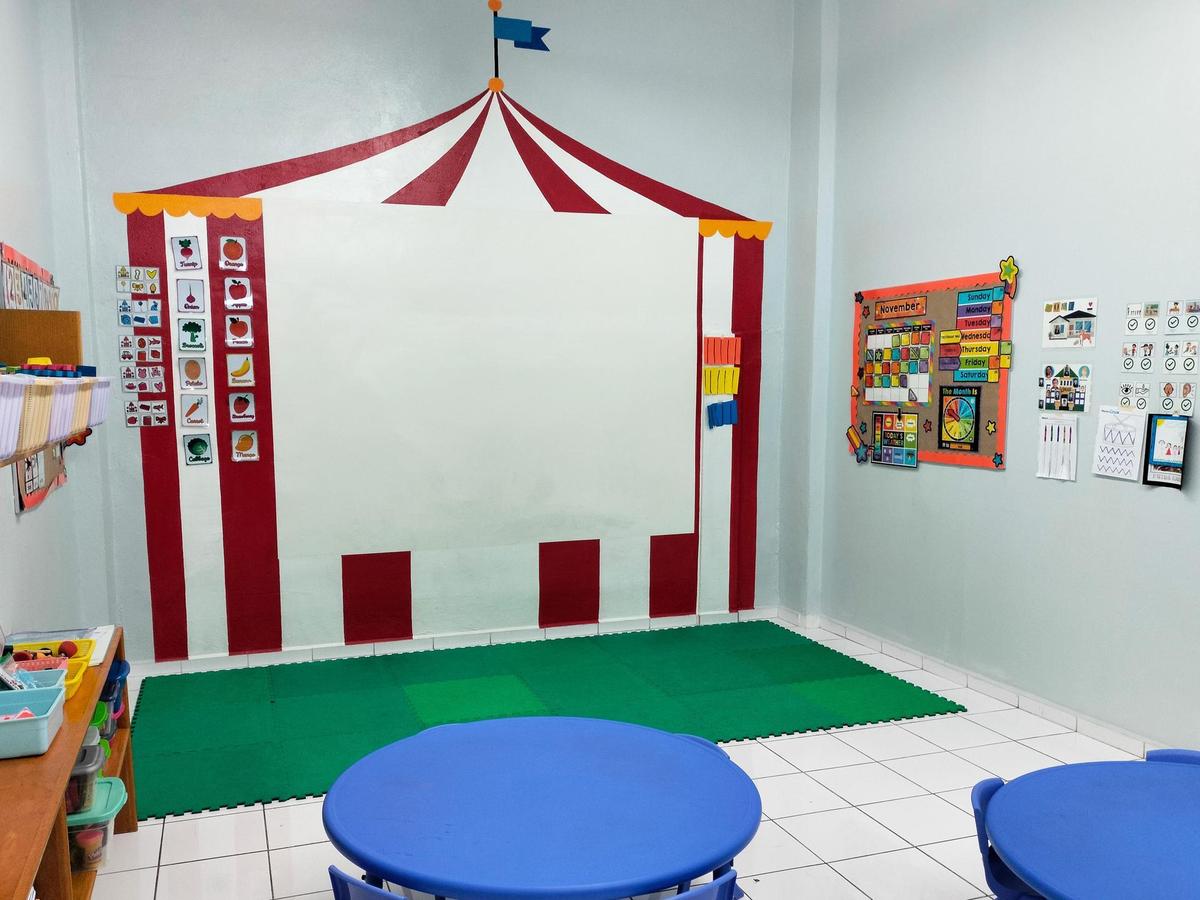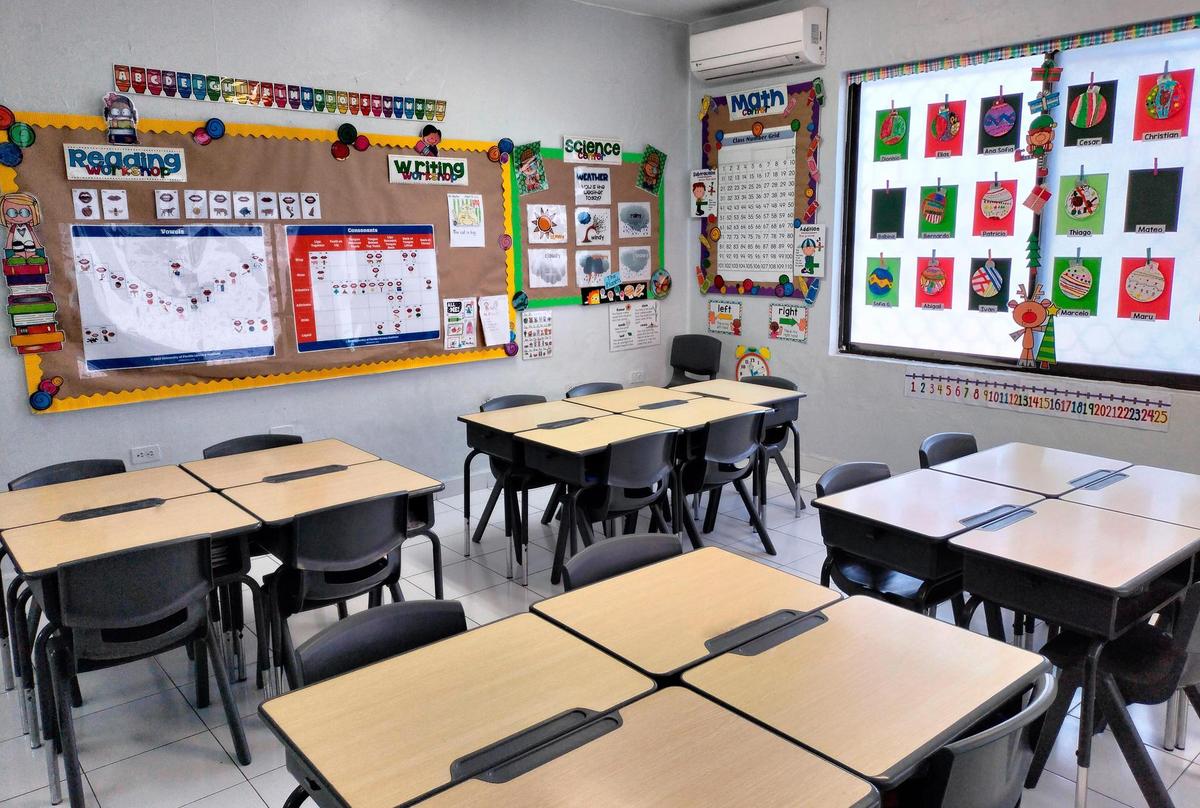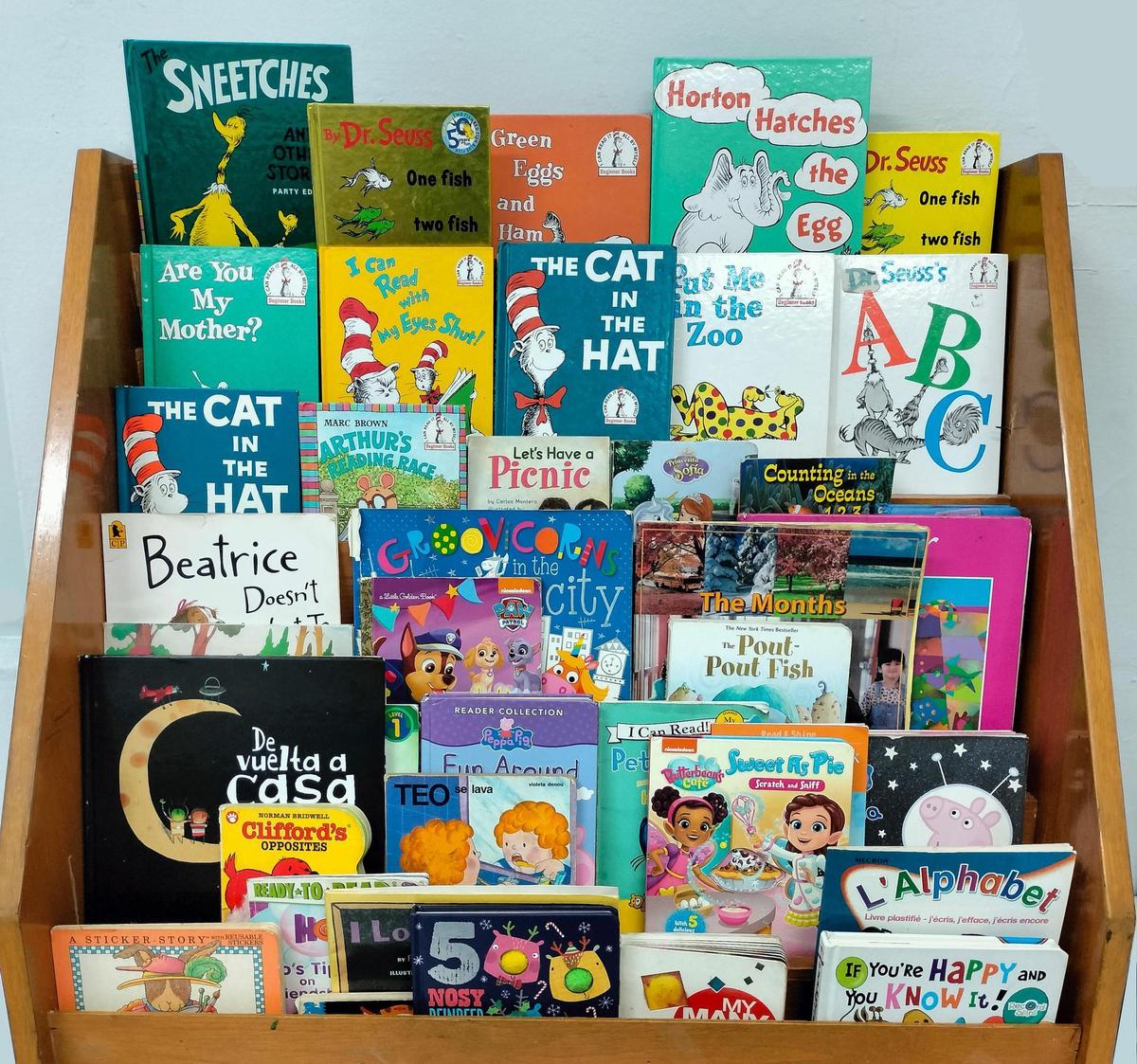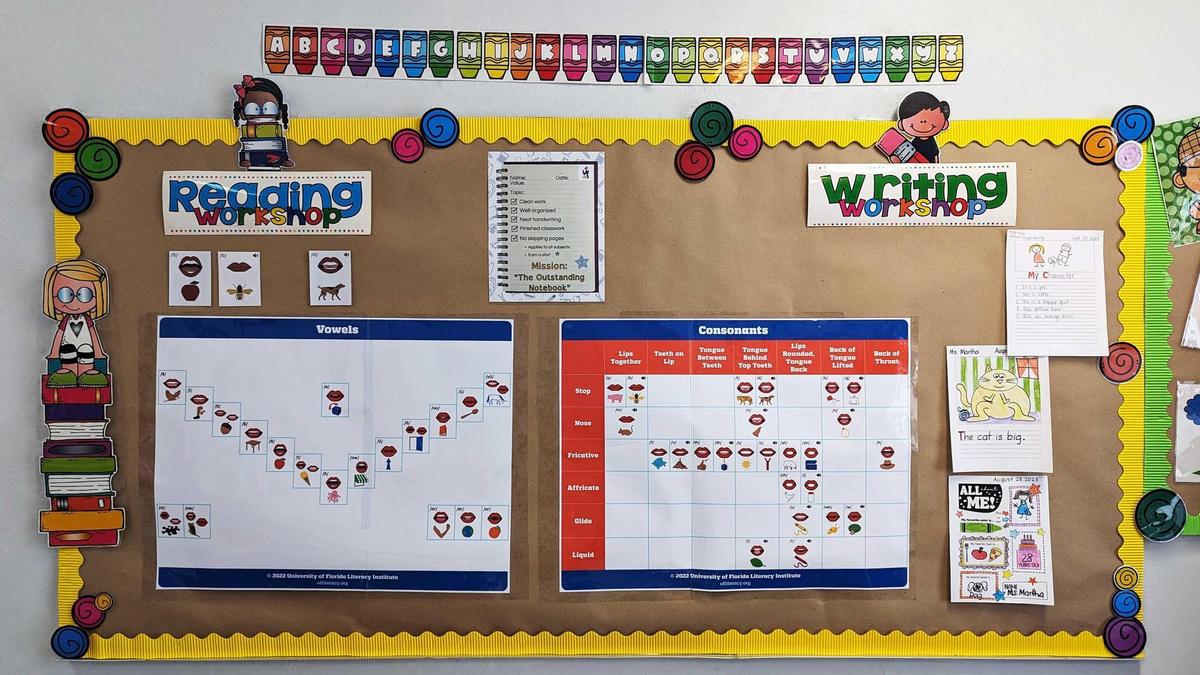Elementary
ELEMENTARY |
|
Curricular Program
|

The LAF curriculum is based on international educational standards and is strongly supported by reading and writing. The school fosters a love for reading to stimulate imagination, curiosity, and learning.
The goal is for young students to understand, develop critical thinking skills, speak, and write, expressing their ideas and feelings in three languages: English, French, and Spanish.
The school ensures that students master English while maintaining the importance of Spanish as a key means of communication.
In science, students not only learn theory but also develop projects and experiments to understand the program's content experientially.
Classes are taught in mini-lessons:
- The teacher explains and models
- The student practices independently
- The teacher checks for correct understanding.
Student academic performance is measured with international standardized tests (MAP) in Reading, Grammar, Science, and Math.
| LANGUAGE |
| 70% | 20% | 10% |
Subjects in English:
Phonics
Reading
Spelling
Vocabulary
Grammar
Writting
Math
Technology
Science
Art
Values
Subjects in Spanish:
Spanish
History
Geography
Civics
Sports
Music
Subjects in French:
Français
(1st to 3rd grade - 4 classes per week)
(4th and 5th grade - 3 classes per week)
| Reading Program |
The English and Spanish programs are based on reading to develop vocabulary, grammatical structure, spelling, oral expression, and comprehension. Students develop a love of reading, helps students' overall academic performance.

The school has a variety of classroom libraries that support the reading program:
1.In-Class Libraries: Each classroom from 3rd grade kindergarten to 9th grade has 300-500 books.
2.Digital Platforms: Two platforms, Raz-Kids and Tumblebooks, contain a variety of readings in Spanish, English, and French to supplement the academic program's reading material.
3.Academic Program Libraries: Grade-level reading books used by teachers for lessons. These libraries are aligned with U.S. educational standards.
The readings are age-appropriate to create a positive connection and help students learn to read with enjoyment
| Writing Program |

The program's goal is to develop writers who can express their ideas and feelings. Writing is used to strengthen grammar and spelling. Students are taught to write in English, French, and Spanish, and are encouraged to recognize the writer within themselves. A specific time each day is dedicated to writing development.
| Math Program |
Students develop mathematical skills using international methods and curricula, learning different ways to solve problems using logic, not just memorizing concepts.
The math program used is "Everyday Math". Concepts are learned in a spiral manner, gradually increasing in complexity, and students are taught to arrive at the same result in different ways.

| Technology Program |

In elementary school, students from 1st to 3rd grade use the computer lab (equipped with Chromebooks) to practice and reinforce topics from class. They use academic platforms for math, reading, and science.
Students in 4th and 5th grade bring their own devices, which they use daily in class for individual or collaborative projects.
In technology class, they use the "Coding" platform to learn digital programming.
| Educational Technology Platforms |

This platform is used in kindergarten and elementary school to support the reading program. It has a wide variety of books in both English and Spanish with comprehension exercises.
RAZ-KIDS helps students develop strong reading skills by providing them with texts at their individual reading level to ensure good comprehension.

Used from toddlers to 9th grade, this reading platform helps develop skills in reading comprehension, grammar, and mathematics. The collection includes over 1,100 titles in English, Spanish, and French.

This platform is used from 3rd to 5th grade to support the reading program. It focuses on developing skills for accurate and fluent reading to achieve deep comprehension.

This platform provides animated educational resources used in Kindergarten, Elementary, and Jr. High as academic support. It features short, engaging lessons that reinforce learning in subjects like Spanish, English, Science, Art, and Music.
.

IXL has three platforms: Math, Language Arts, and Science. The Math platform is used from Kindergarten to Jr. High to practice topics covered in class. The Language Arts platform is used from 3rd to 9th grade to support the English program. The Science platform is used from 4th to 8th grade to reinforce the Science, Biology, and Physics programs.

This program is used for practicing and mastering basic math operations, including addition, subtraction, multiplication, division, and fractions.

This platform offers a series of interactive science lessons. It presents scientific concepts through short videos and hands-on activities. Each lesson is structured as a mystery that poses a question, and students conduct experiments and activities to discover the answer.

This learning platform supports the academic Technology program.
From 4th to 9th grade, the "Coding" platform is used to teach digital programming for developing websites, games, and applications.

This is a virtual platform that allows teachers and students to securely share notes, homework, and projects online. It also helps parents keep track of their children's performance by letting them view assignments, tasks, and announcements.
| Standardized Test |

Dynamic test aligned to international educational standards that is applied in 146 countries to 565 international schools, to millions of children worldwide. MAP is an individual adaptive test that measures skills in Reading in English and Spanish (1st to 9th grade), Grammar in English (2nd to 9th grade), Mathematics (1st to 9th grade) and Science (4th to 9th grade). The results obtained allow us to know the academic progress of each student and compare it against scores obtained worldwide.

This is a standardized test with international recognition that measures students' proficiency in the French language.
Competencies assessed in the DELF:
- Listening comprehension: Measures the ability to understand spoken messages in French, such as conversations, instructions, or announcements.
- Reading comprehension: Assesses the ability to read and understand short, simple texts.
- Oral expression: Assesses the student's ability to express themselves verbally in French, participate in dialogues, and answer questions.
- Written expression: Assesses the ability to write simple, coherent texts, using grammatical structures and vocabulary appropriate to the level.
As part of the French academic program, students from 3rd to 9th grade take internal evaluations at the beginning and end of each school year. Additionally, 4th, 6th, and 9th-grade students take the official DELF test at the Alliance Française facilities.
| Grade | DELF Test | Explanation of each Evaluation |
| Nursery, Pre-K, Kindergarten, 1st and 2nd Elementary grades | - | The DELF test is not administered in these grades. The students are learning the basics of the language |
|
3rd grade
|
Prim A1.1
Institutional
|
The student develops the ability to recognize and use very elementary words and expressions. They can understand basic instructions and answer simple questions. They are beginning to read and write short sentences. Present tense |
| 4th grade |
Prim A1
Official
|
The student develops the ability to understand and use simple everyday expressions in French, as well as read and write short texts, which allows them to function in basic daily life situations.
Present tense in simple sentences.
|
| 5th grade |
Prim A2
Institutional
|
The student can communicate simply but effectively in common situations, developing basic skills to interact in French in everyday and predictable contexts.
They use the present and past tense and construct more elaborate sentences. |
| 6th grade |
Prim A2
Official
|
|
| 7th & 8th grade | Jr A2 Institutional |
The student can understand and communicate in French in basic everyday situations, comprehending simple texts and messages, and expressing themselves clearly and simply both orally and in writing. Present, past, imperfect, and future tenses. |
| 9th grade | Jr A2 Official |
| Physical Classroom Set-Up |



CLASSROOM LIBRARY SPACE
There are libraries of 300 books in English in each of the classrooms from 3rd Kindergarten to 6th grade, aligned to international educational standards.
The objective of these libraries is to improve the students' level of English by encouraging the joy for daily reading, in order to enrich the vocabulary, comprehension, oral expression and reflection.
Students are taught to express themselves in writing and are motivated to recognize the writer within each of them. Creativity is encouraged in the students.


On a wall, a space is assigned where the main vocabulary to be learned is placed.
In this area, the work done during the classes is displayed. It is important that students see, in addition to their work, the work of their classmates, as it allows them to see where they can improve.


The didactic materials support the practice of the topics seen in class.